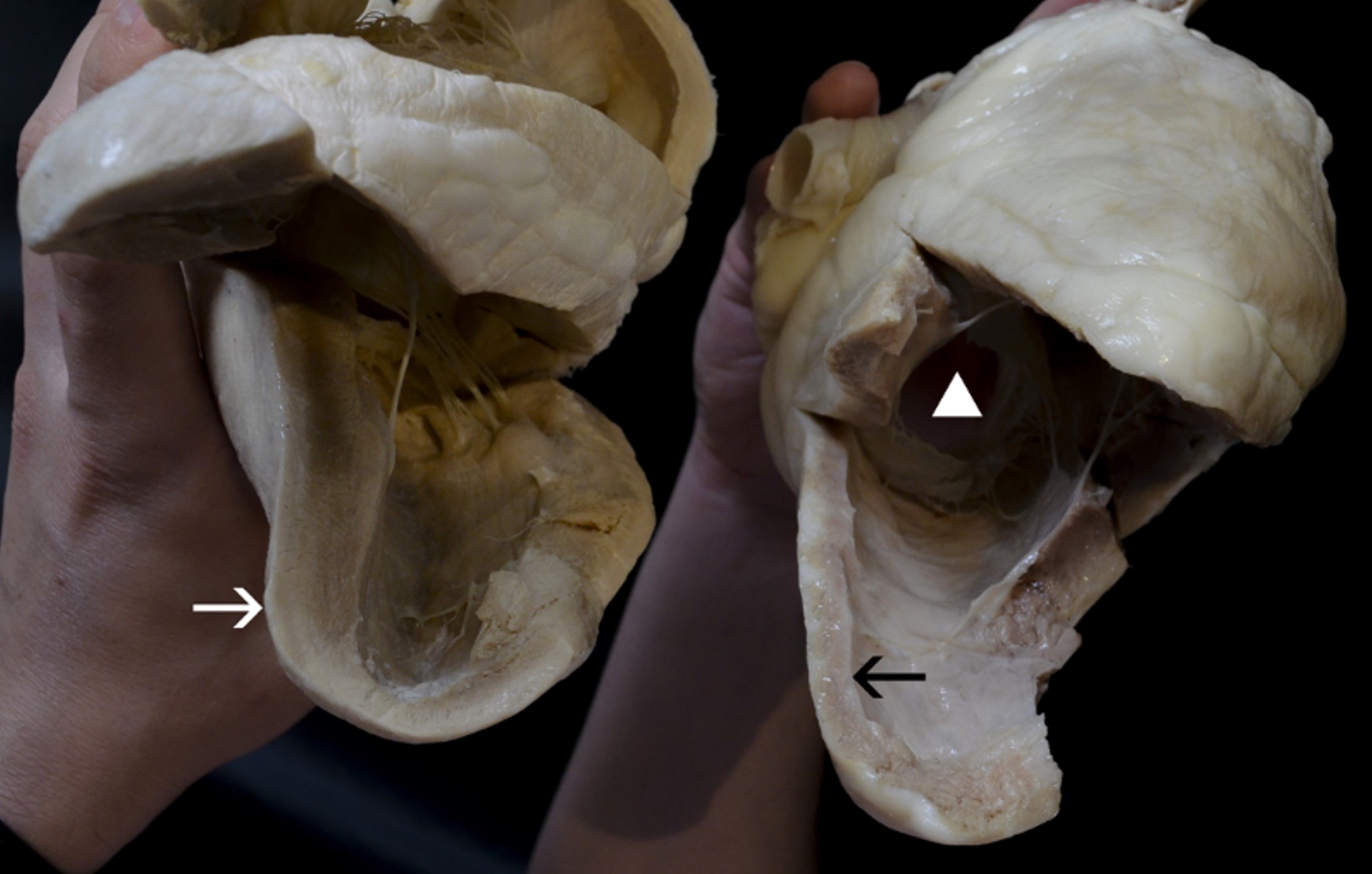Week of 21 September 2021

The left ventricle is being shown, demonstrating anatomical characteristics of heart failure!
The left ventricle is typically conical in shape with an anteroinferiorly (ventral and caudal by veterinary terms) projecting apex. It is separated from the right ventricle by the interventricular septum. In this photograph, the plastinated heart on the right is an example from a failing heart: The left ventricular wall is pathologically thin, the left ventricle is enlarged and the mitral annulus is dilated, resulting in functional mitral regurgitation.
White arrow: Normal thickness of the left ventricle wall
Black arrow: Thinner than usual left ventricle
White triangle: Much dilated mitral annulus and tethered mitral leaflets
Plastination is a technique used to preserve organs and tissues in which the water and fat are replaced by plastic materials, yielding specimens that do not decay and retain most properties of the original sample.
This plastinated heart is one example from the comprehensive suite of Surgical Training and Pathology Services offered by IMMR’s in-house team of veterinary cardiac surgical specialists and Board-certified Veterinary Pathologists, in collaboration with the veterinary school of Maisons-Alfort, Paris.
Contact us to learn more and discuss your preclinical research and pathology needs.
Follow us on LinkedIn and don’t miss new images from our library that we post every Tuesday, when you’ll have another chance to recognize, identify or diagnose what is shown. You can also stay updated on some of the latest developments in Preclinical Science. Stay tuned!


